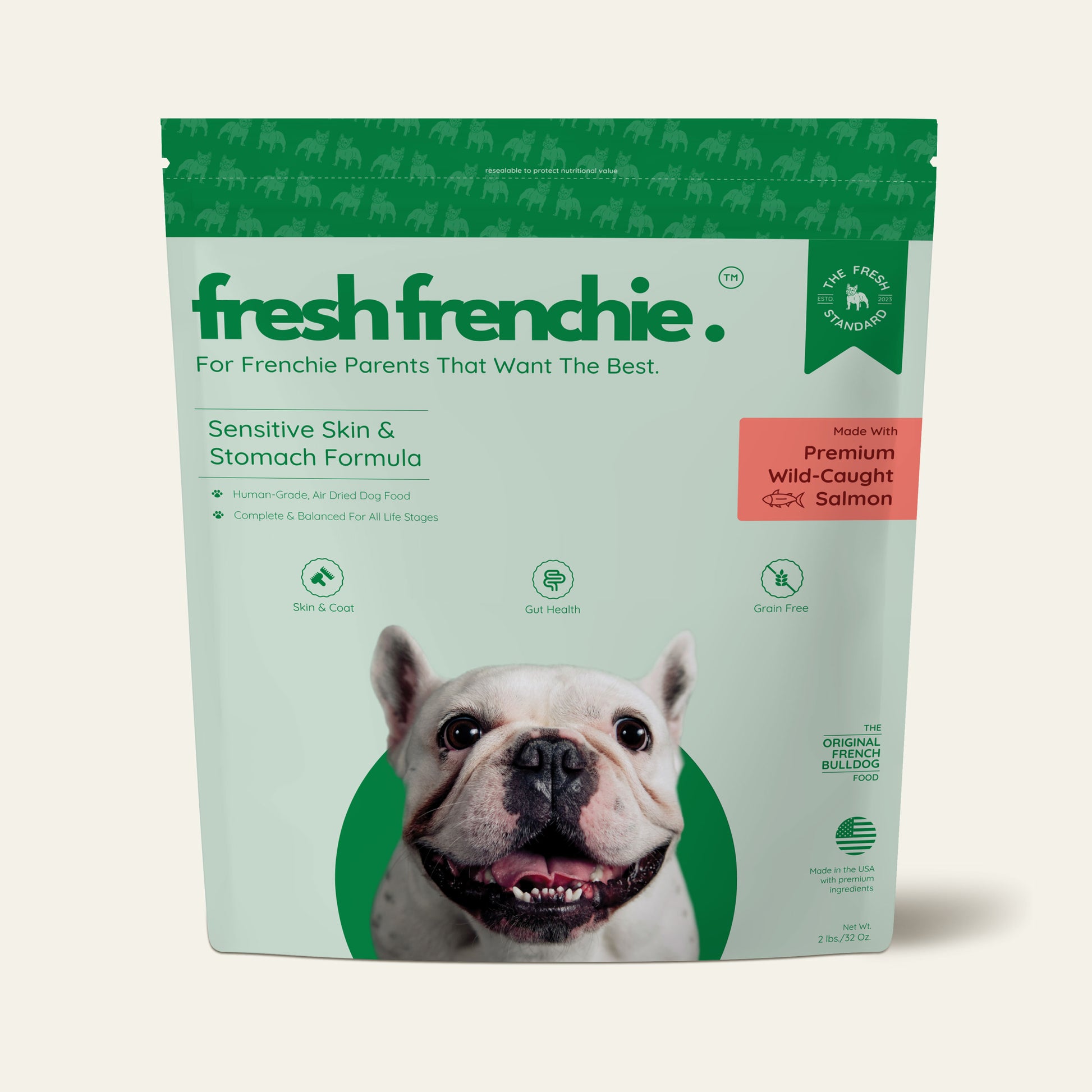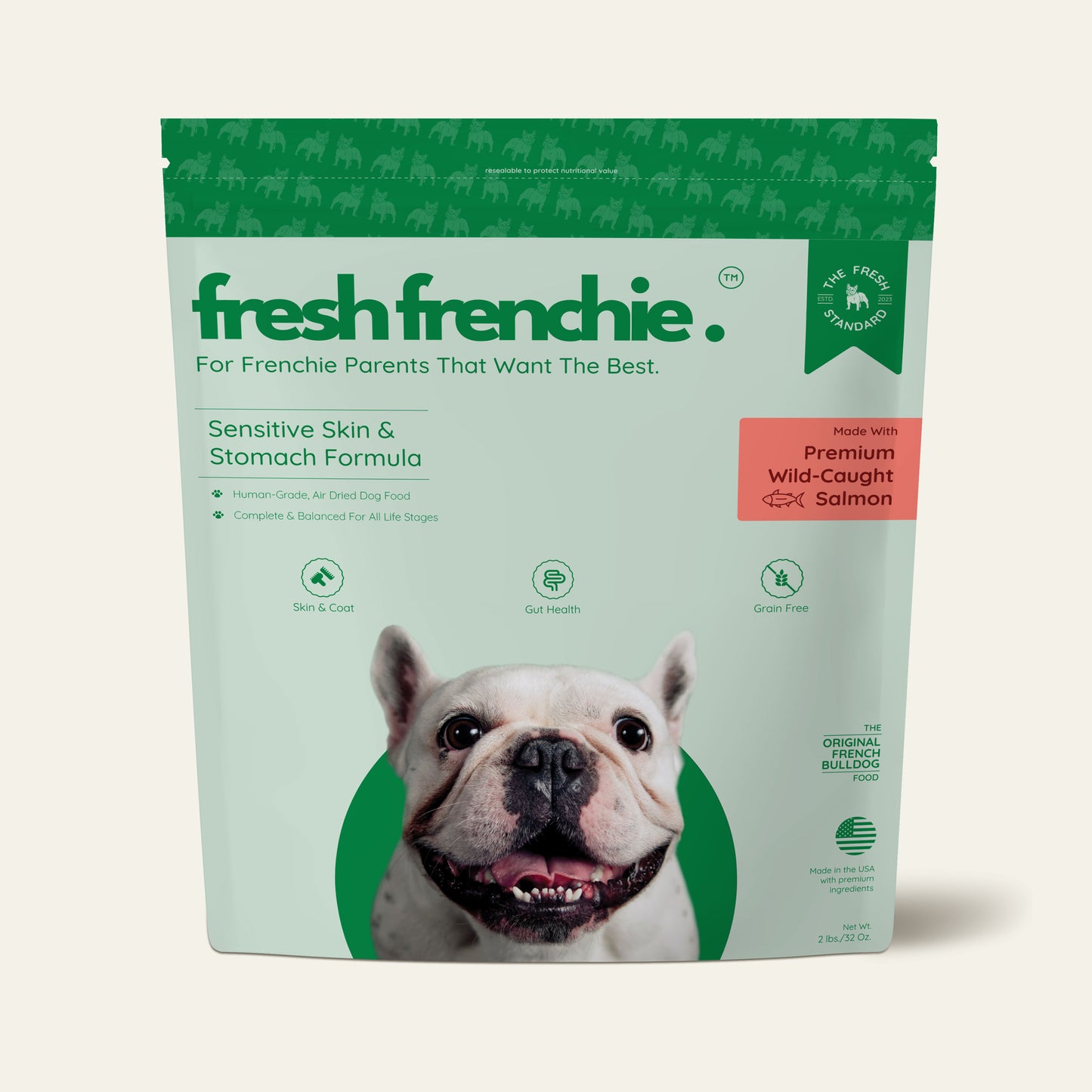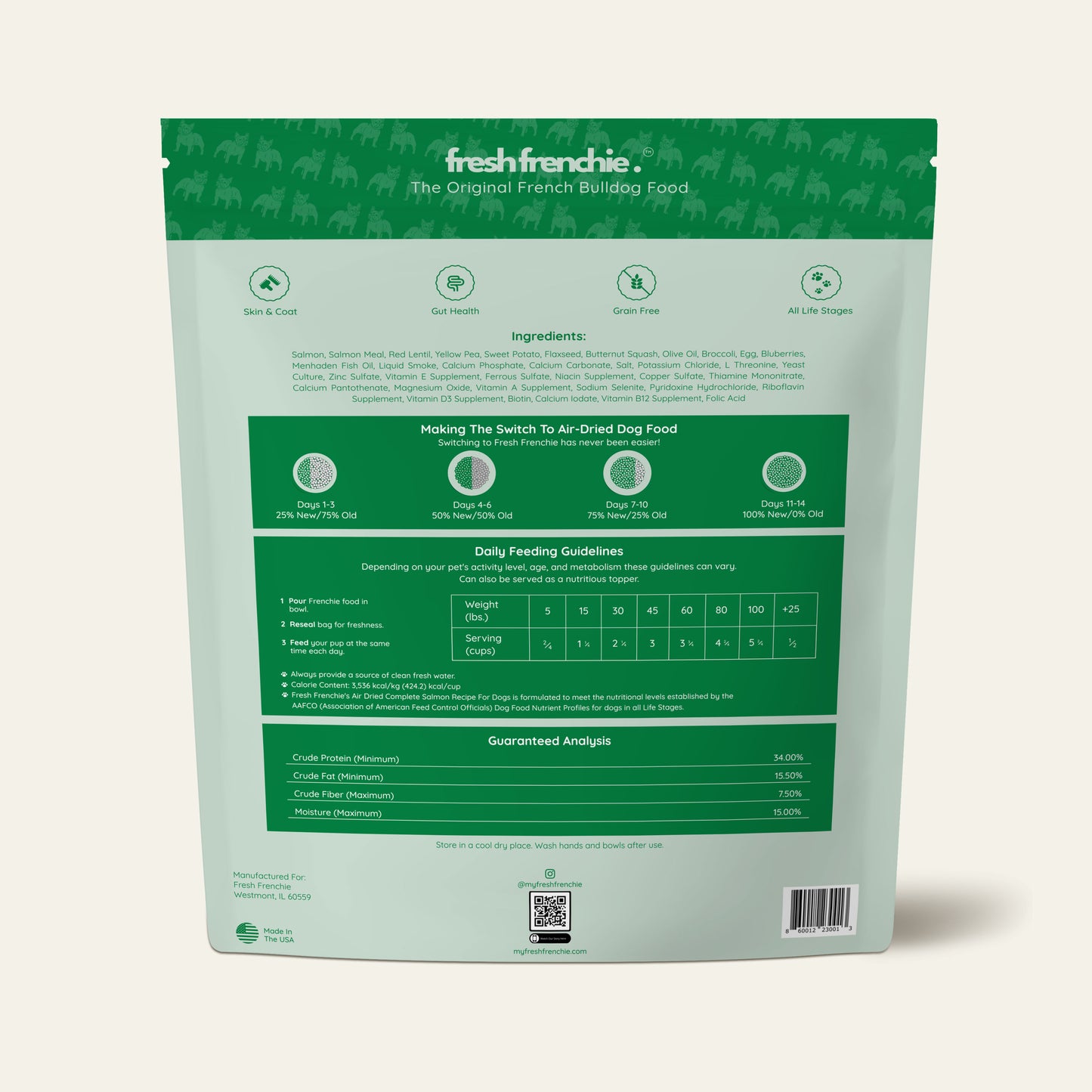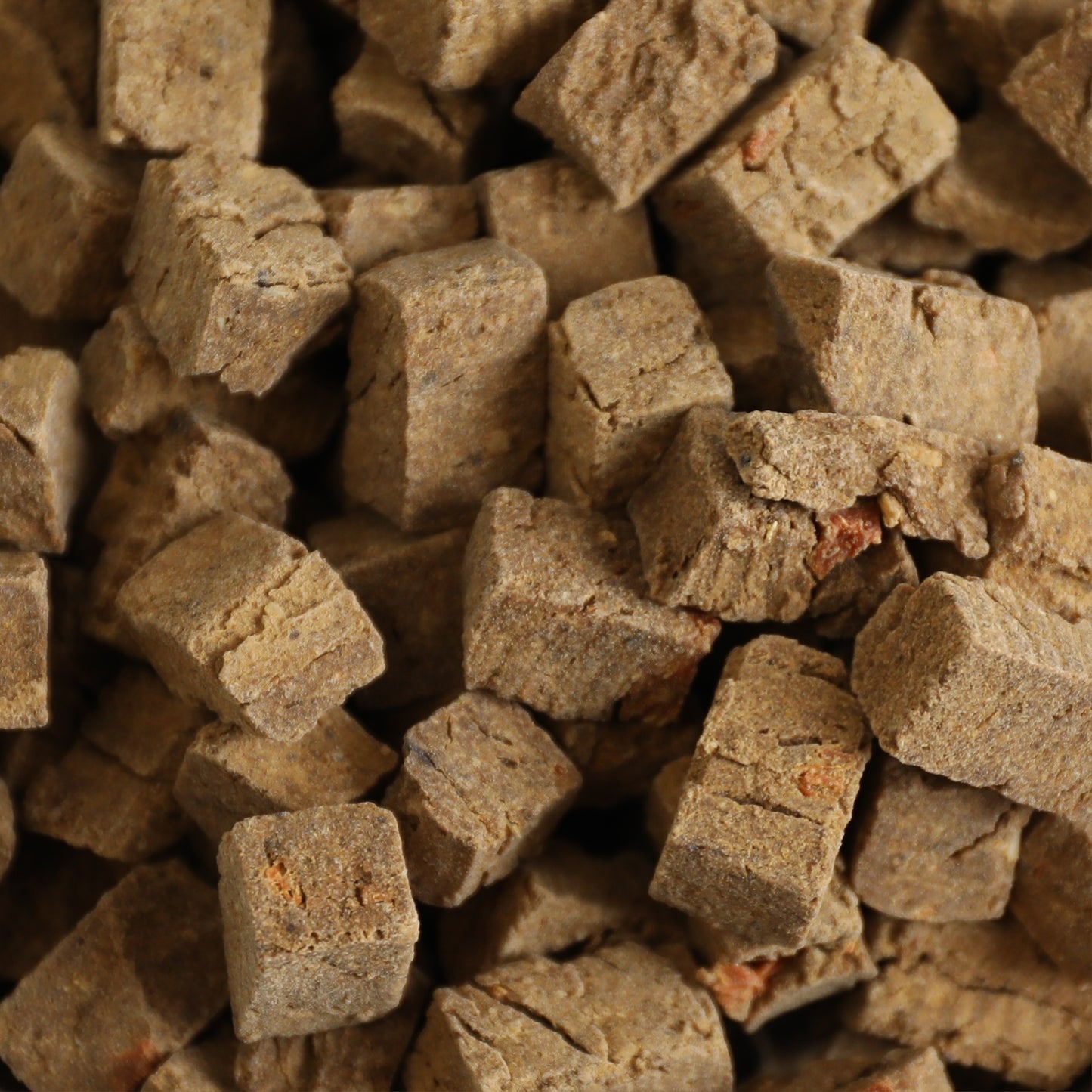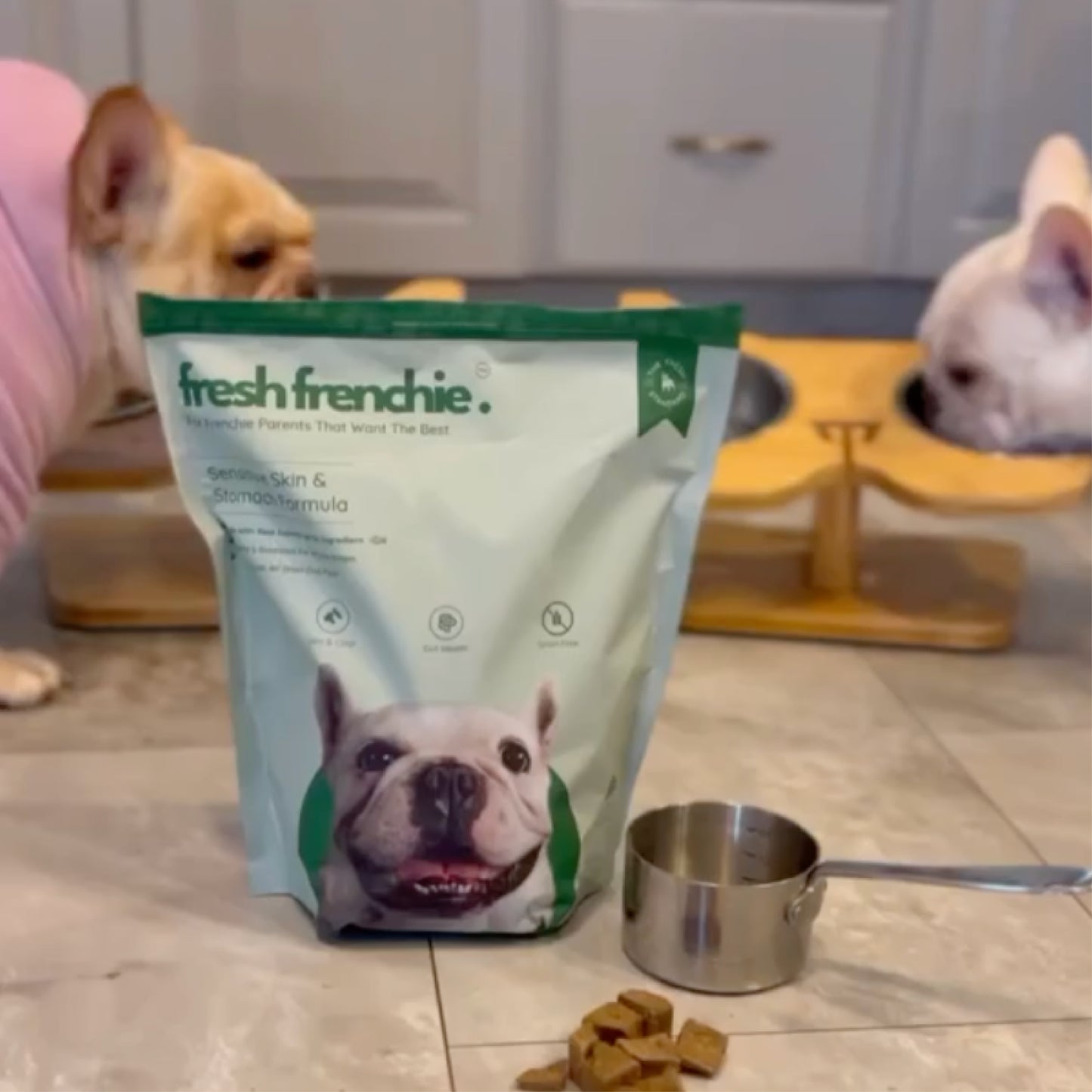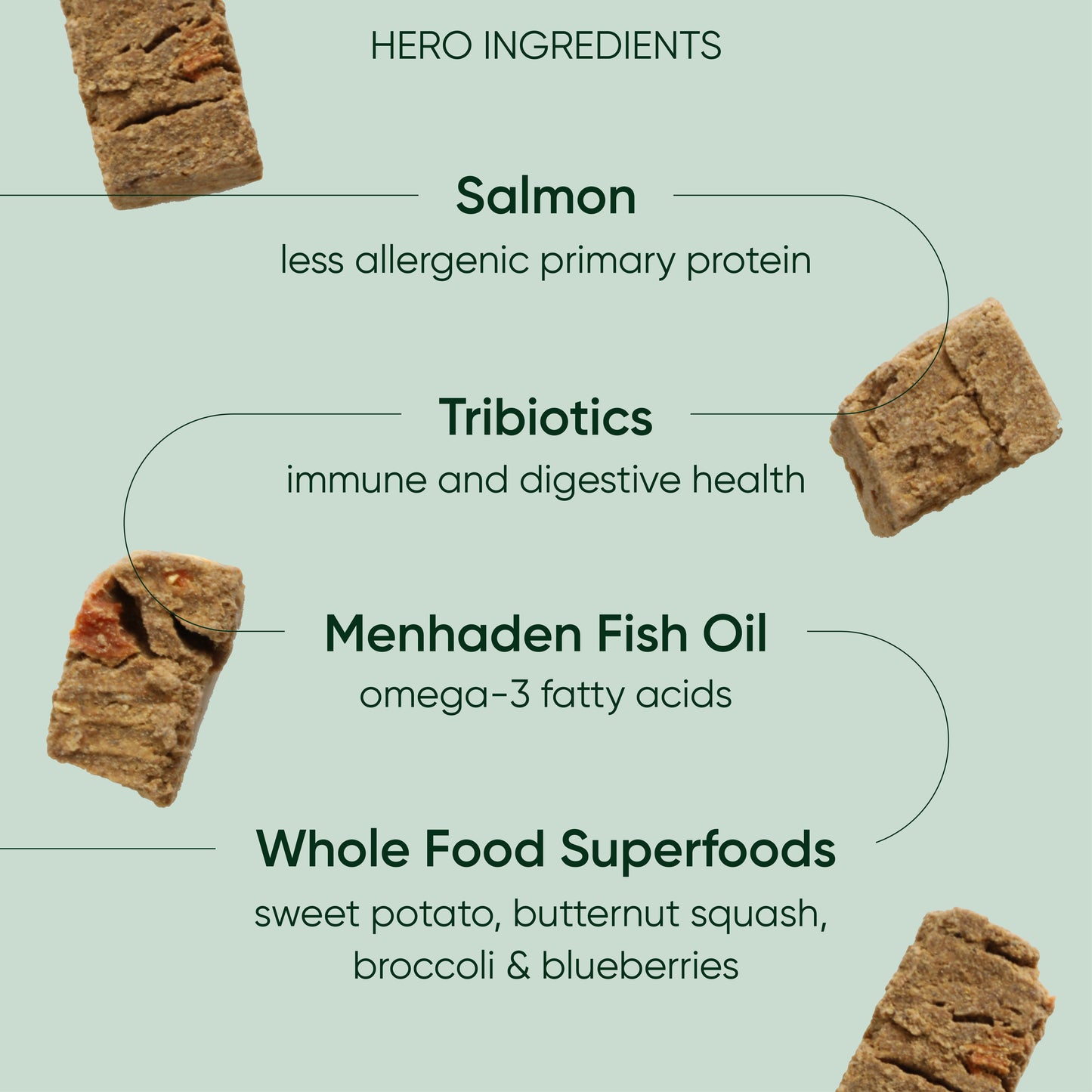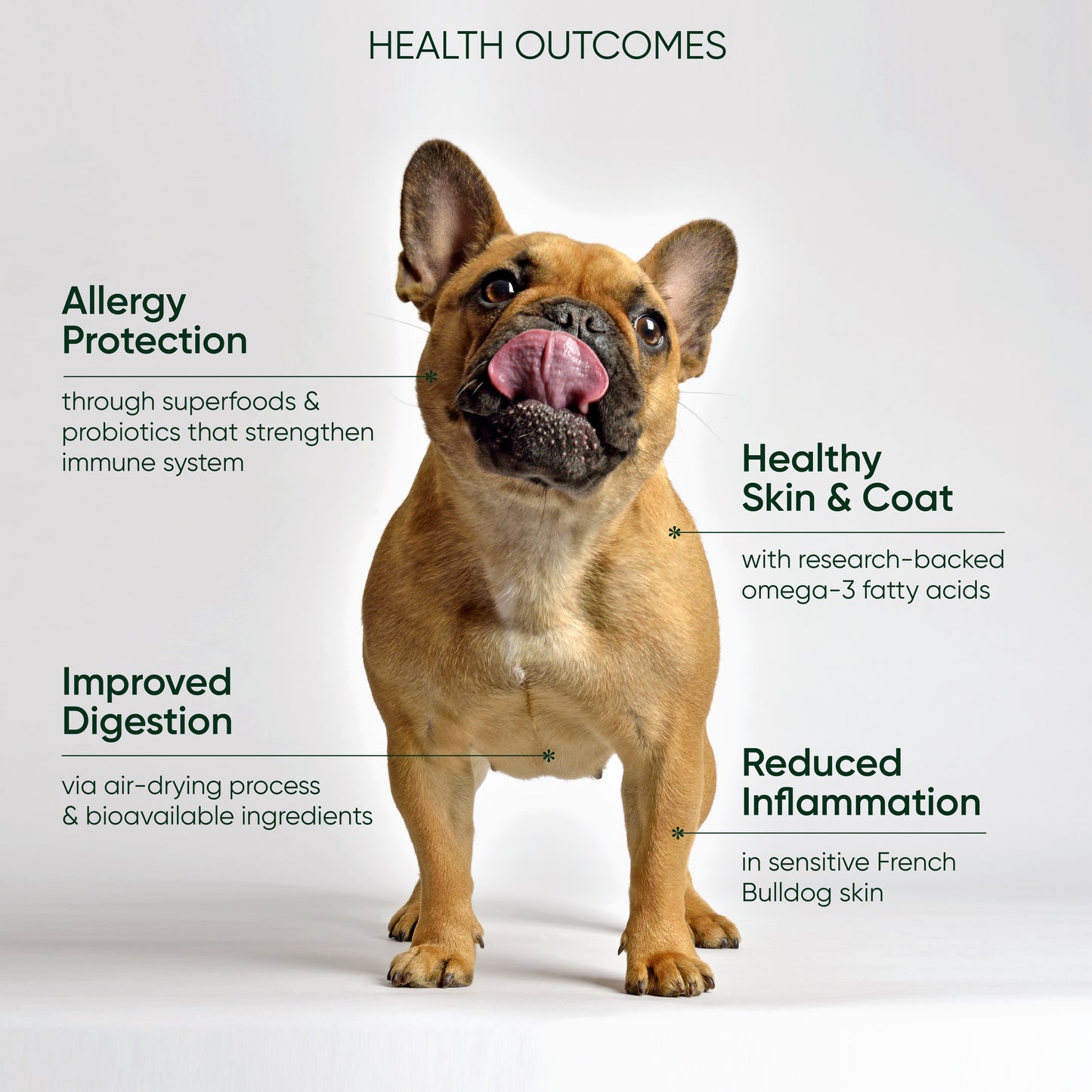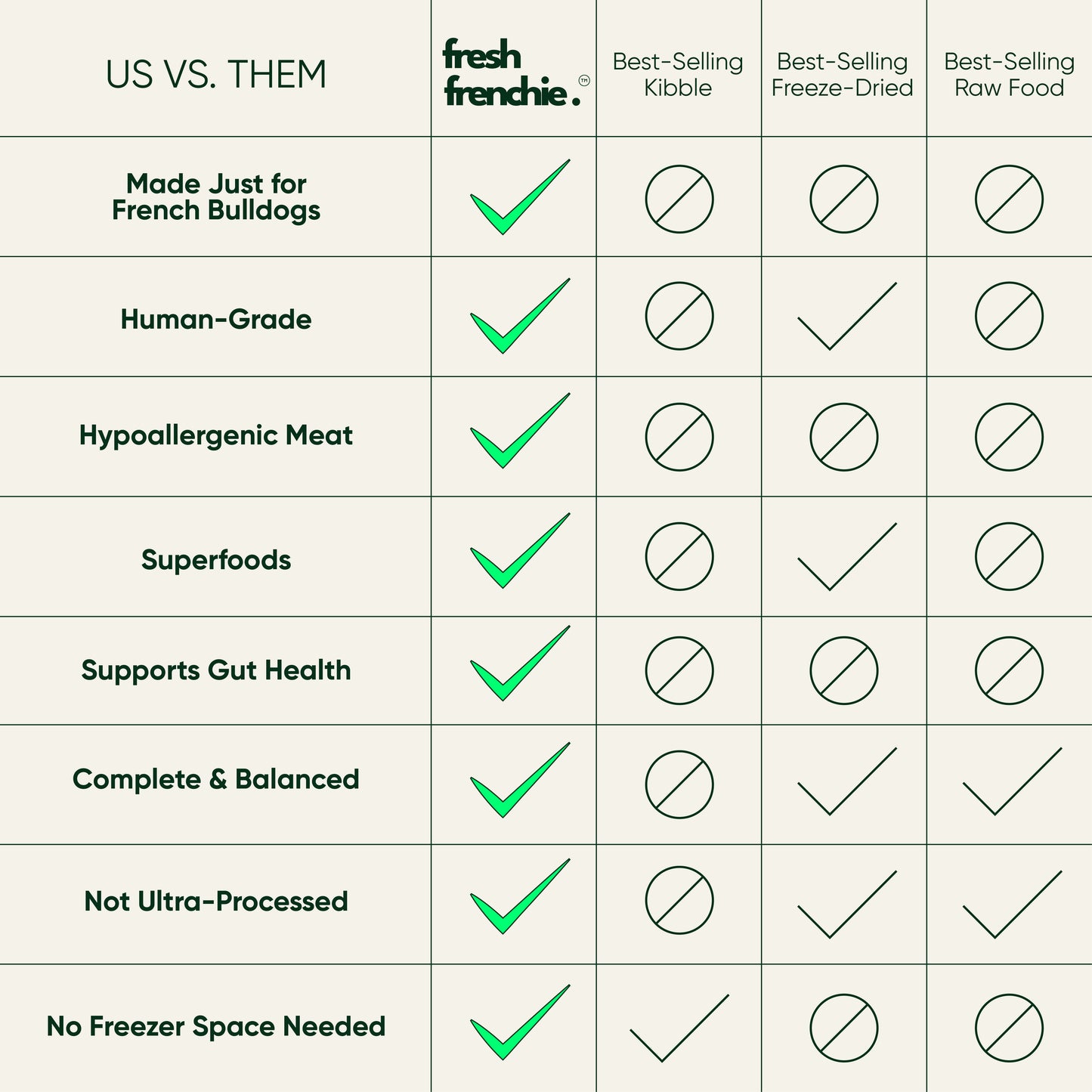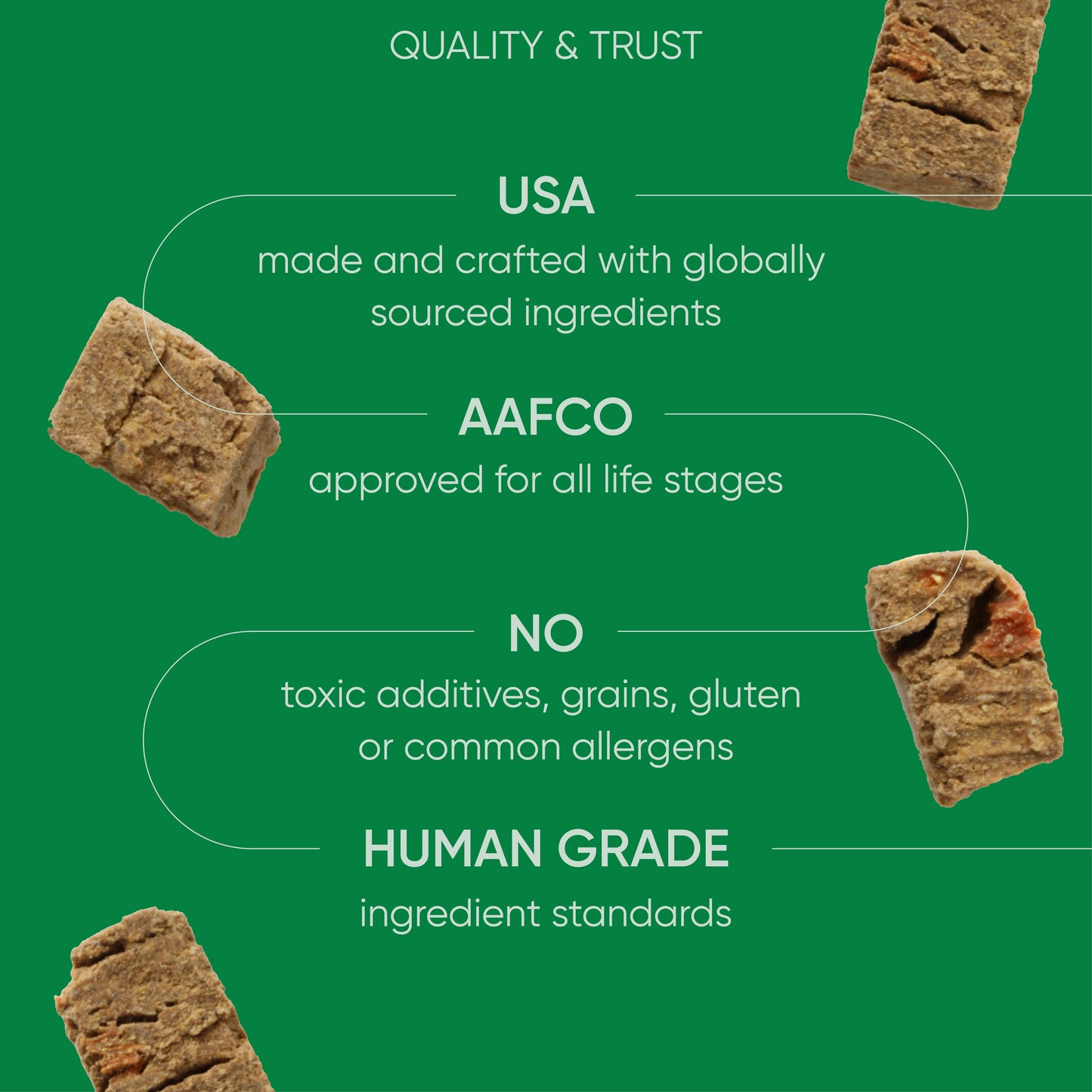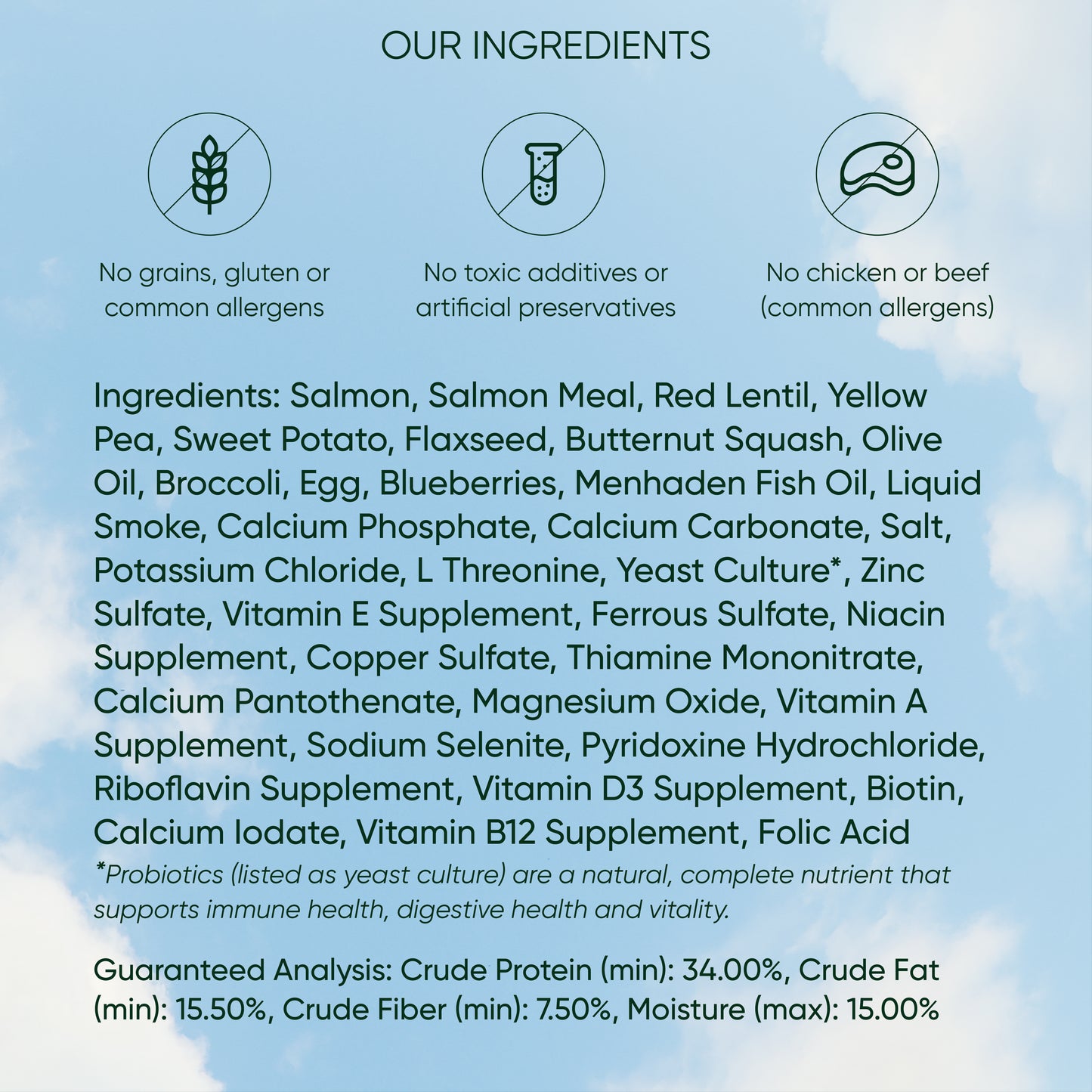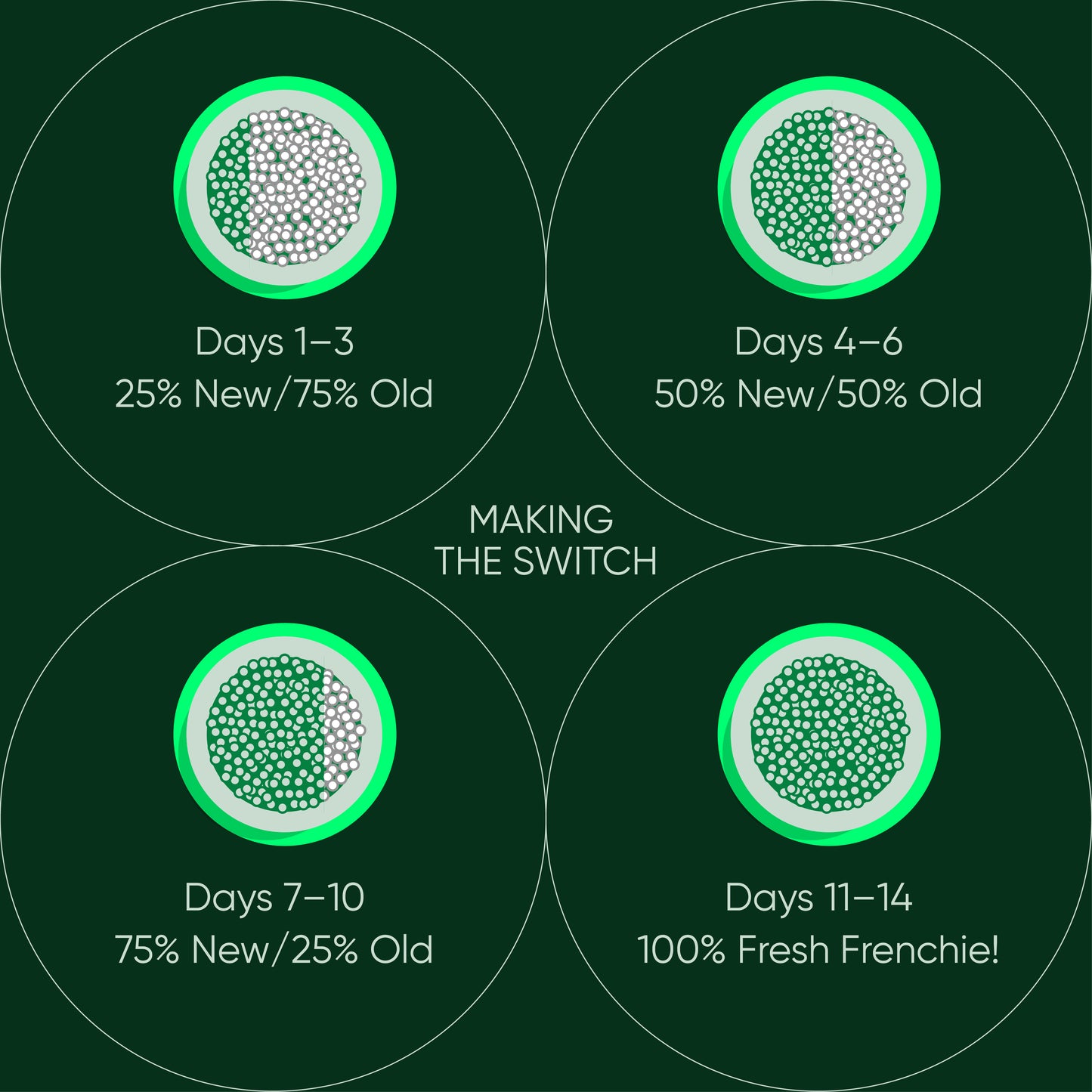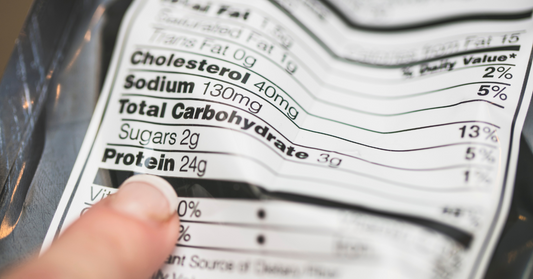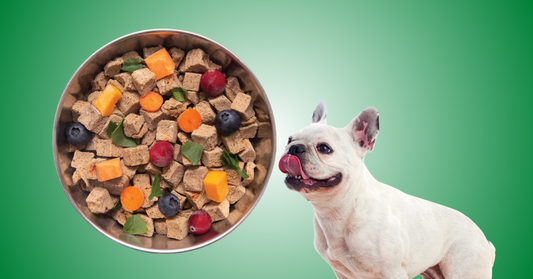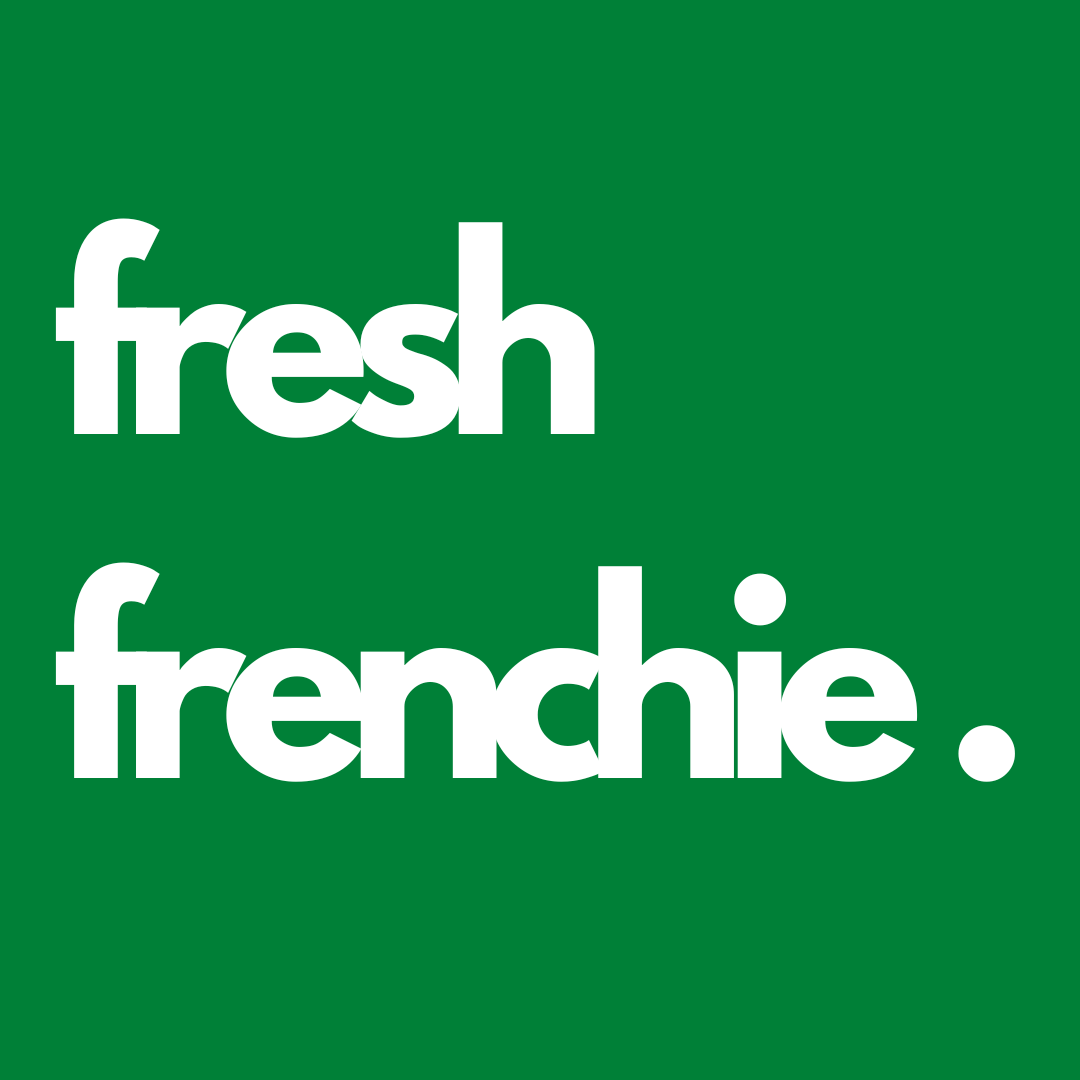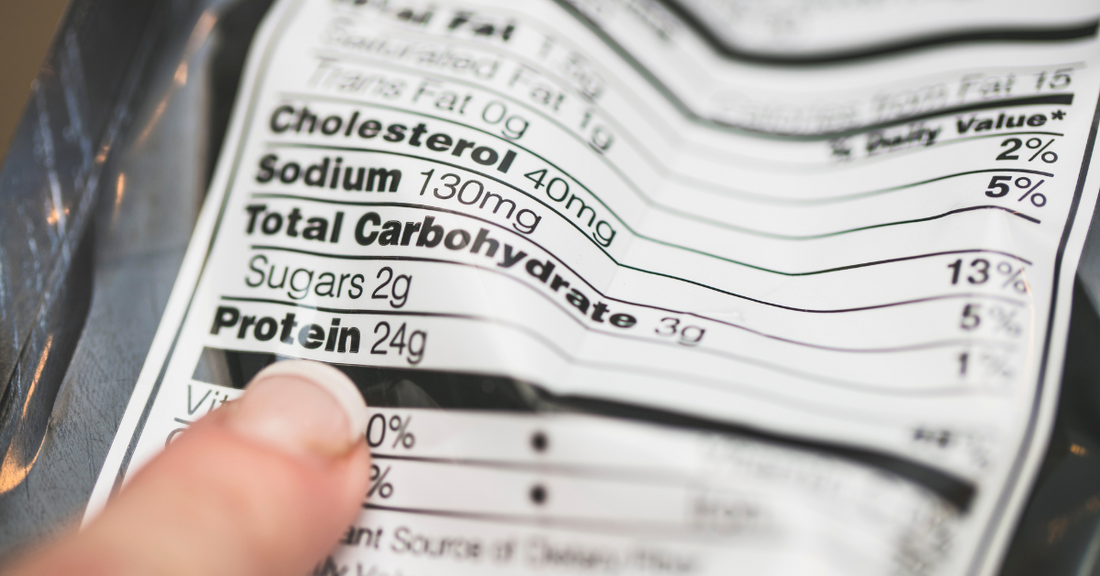
How To Read Dog Food Labels?
Share
Have you walked down the dog food aisle of Petco before? It’s a color and nerve wracking place. Especially for new pup parents.
So how does a dog parent go about deciding which dog food to buy? The pet food label.
The dog food label contains important information if you know how to read it. For example, the label will tell you if the food is breed specific or human grade.
To help dog parents out, we are going to demystify everything on a label from feeding directions to guaranteed analysis.
Are Dog Food Labels Regulated?

Yes, just like our human food, dog food is regulated to make sure it's safe and healthy. The FDA, which is like a food police, sets the rules for all animal food. They make sure the labels are honest and the food is made under clean conditions.
Some states also have their own rules, which are often adapted from AAFCO, the Association of American Feed Control Officials.
The 8 Parts Of A Dog Food Label
The label on pet food is the best way to make a choice on which food you want to feed your pup. But it can be hard to understand at the same time.
The good news is that we are here to help. Also, all dog food labels follow the same rough format. See below to understand more.
#1. Product Name
The name of the food is the first thing people see on a pet food label. It's like a catchy song that makes you stop and listen. Often, the name tells us what's inside the food.
Many pet owners look for food with specific ingredients, so the name often highlights those. But did you know that the name can also tell you how much of that ingredient is actually in the food?
A pet food’s name is subject to strict rules created by AAFCO in the US. These rules dictate how to name the pet food based on the ingredients.
#2. Quantity
The quantity list of dog food labels tells you how much food is in the bag or can. It might be measured by weight, like pounds, or by volume, like cups.
But remember, wet food is heavier than dry food, so the amount in the container might not be the same. To know how much bang you’re getting for your buck, compare the cost per pound or per ounce.
#3. Guaranteed Analysis
Many states have rules about how much of certain things must be in pet food. These rules include things like protein, fat, fiber, and water. The label must show the percentage of each of these. If the food says it's low-fat, it must also show how much fat is in it. And if it has vitamins or minerals, it must say how much of each is there.
The FDA has a detailed explanation on its website about how these percentages are calculated. This information is helpful for those who want to understand the numbers on the label.
#4. Ingredients

According to veterinarians, the ingredients list is the most important part of the label. The ingredients are listed in order from most to least. Each one is listed separately, and the FDA has rules about what the names should be.
When you look at the ingredients panel, you may notice byproducts being included. The word "byproducts" might sound yucky to us, but they can be good for dogs. They include things like liver, which is full of vitamins.
Other byproducts are blood, brains, bones, stomach, and cleaned intestines. Meat meal might also have byproducts. Your dog might love it, even though it sounds gross to us!
#5. Nutritional Adequacy Statement
When you look at the small print on the side or back of the package. Many dog foods say they are "complete and balanced" or "human grade" These aren't just fancy marketing words. According to veterinarians, these words mean the food meets government standards and has everything a healthy dog needs.
The label should also tell you what stage of life the food is good for. The FDA has rules about what these stages should be, like puppy, adult, or senior. But there aren't any rules for things like "senior" or "small breed." So, a "senior" food must be good for adult dogs, but it doesn't have to be anything special.
The nutritional statement should be in a special format that makes it easy to compare different foods. This helps you make sure your pup gets the best food possible.
#6. Feeding Guidelines
The label tells you how much food to give your dog. It's usually measured by weight or volume. But remember, your dog's size, personality, where they live, and other things can affect how much they eat. The feeding directions are just a guide, not a rule. If you have questions, ask your vet.
Veterinarians say it's important to check the "sell-by" or "best-used-by" date. Because dog food has things like fats and proteins, it can go bad. Old dog food has less nutrition and can grow bad bacteria or mold that can make your dog sick.
#7. Manufacturer's Information
The manufacturer's information on a dog food label tells you who made the food and where they're located. This is important because if you have any questions or problems, you know who to contact.
But for competitive reasons, the manufacturer’s information is not often printed. Instead what you will see is who the product was manufactured for and their address.
#8. Calorie Statement
The calorie statement on a dog food label is like a fuel gauge for your pup. It tells you how much energy is packed into each bite. Just like we watch our calorie intake, you can use the calorie statement to make sure your dog gets the right amount of energy.
Think of it this way: if your dog is a puppy, they need more fuel to grow. If they're a couch potato, they don't need as much. By knowing the calorie count, you can make sure your dog gets the perfect amount of energy to stay healthy and happy.
Decoding Dog Food Terminology
The food industry is constantly changing and that is no different for pet foods. With all of the new trends it is difficult to know exactly what you’re getting. Below we will cover some popular terms listed on dog food labels.
Human-Grade
The FDA and USDA have strict rules for human-grade food. This means it's safe for people to eat. But for dog food to be "human-grade," all the ingredients must be safe for people, and it must be made, packaged, and stored according to special rules.
Just because food is "human-grade" doesn't mean it's better, tastier, or cheaper than other good dog food. These foods must also say "dog food" on the label, just like "human-grade."
Air-Dried
Air-dried dog food is a healthier option and the term is in reference to the food product method. It's made with a gentle drying process that uses less heat, preserving more nutrients than traditional kibble. This means your dog gets more of the good stuff.
It's also easier to digest, making it a great choice for dogs with sensitive stomachs. Air-dried food has fewer preservatives and stays fresh longer, so you don't have to worry about it going bad as quickly.
Breed-Specific

Breed-specific dog food is like a tailor-made outfit for your pup. It means the food is specially designed to meet the unique nutritional needs of that type of dog.
Just like humans have different diets based on our size and activity level.
As an example, French Bulldogs have specific needs too. Here is what some Frenchie specific dog foods include.
- Smaller kibble size: French Bulldogs have smaller jaws, so breed-specific food often has smaller kibble pieces that are easier to chew and swallow.
- Tailored nutrients: These foods are formulated with the right balance of nutrients to support your Frenchie's health and well-being, considering their size, energy level, and common health issues.
- Improved digestion: Breed-specific food can help prevent digestive problems that French Bulldogs are prone to, like sensitive stomachs or allergies.
- Healthier coat and skin: The special ingredients in breed-specific food can help keep your Frenchie's coat shiny and their skin healthy.
By choosing breed-specific dog food, you're giving your Frenchie the best possible nutrition to minimize any unnecessary vet trips.
Grain-Free
There aren't many studies that show grain-free dog food is better. But, Veterinarians think there might be a link between grain-free food and heart problems in some dogs. When these dogs eat regular food with grains, they sometimes get better.
The FDA is also looking into grain-free food because it might cause heart problems in some dogs. This heart problem is called dilated cardiomyopathy, and it can affect certain breeds.
Organic
There aren't any special rules for labeling organic dog food yet, but the USDA is working on them.
For now, organic dog food must follow the same rules as organic human food. This means no fake stuff like preservatives, colors, or flavors. The meat and meat byproducts can't have antibiotics or growth hormones, and there should be little or no filler.
Is organic dog food better? We don't know for sure. Regular dog food is usually good enough, and it lists any fillers clearly. Sometimes, dogs with sensitive stomachs do better with organic food, and organic food can have good antioxidants.
"Natural" doesn't mean the same thing as "organic." "Organic" is about how the plants or animals were grown or raised. "Natural" usually means no fake flavors, colors, or preservatives.
Frequently Asked Questions
How do I interpret expiration dates on dog food?
Expiration dates on dog food are like a best-by date. They tell you when the food is at its best and freshest. It's okay to feed it after the date, but it might not be as tasty or nutritious.
What is the 95% rule for dog food?
Dog food that follows the 95% rule has simple ingredients and a clear name like "Puppy’s Favorite Salmon Food." At least 95% of the food is the main ingredient, even after adding water and vitamins. If you count the water, the main ingredient must still be at least 70% of the food.
What is the 25% rule for dog food?
If the food name says a main ingredient is at least 25% but less than 95% of the food (without counting water), it must use a special word like "dinner," "platter," "entrée," or "formula." This helps you know how much of the main ingredient is actually in the food.
What is the 3% rule for dog food?
If the food name says "with" a certain ingredient, it only needs to have 3% of that ingredient. So, "Lamb with Salmon" means there's only 3% salmon in the food.
What is the flavor rule for dog food?
If the food name says a certain ingredient is in it, there must be enough of that ingredient for you to taste it. But it doesn't have to be a specific amount.

